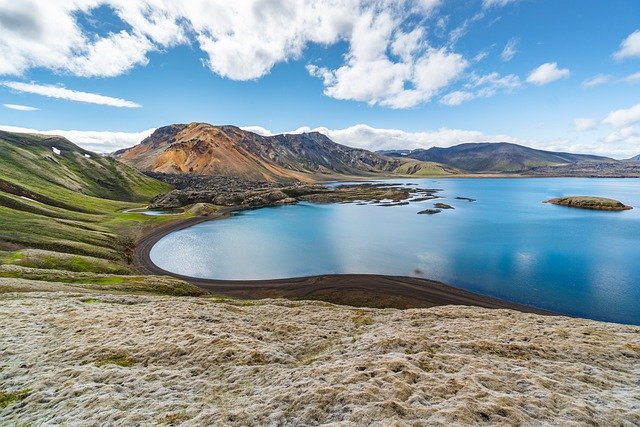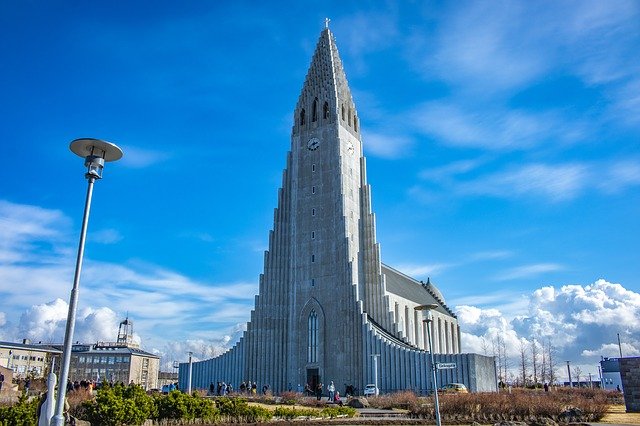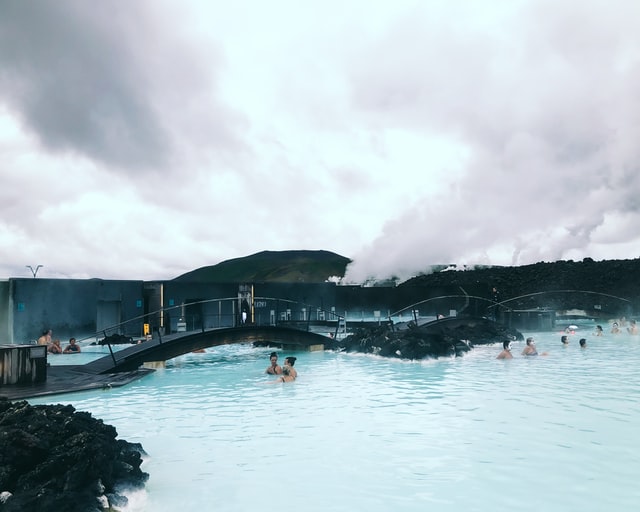Hraunfossar: Icelandic waterfall fed by a spring
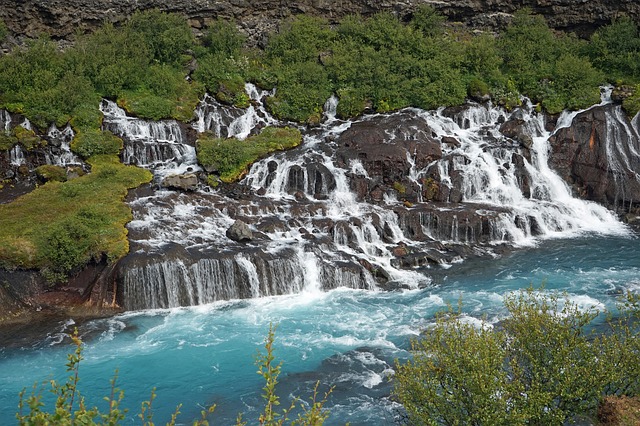
Iceland boasts a unique waterfall named Hraunfossar, which features some remarkable characteristics. Hraunfossar is actually a series of waterfalls created from springs that flow out from underneath the lava, providing visitors with a distinctive landscape that sets it apart from other waterfalls.
In this section, I would like to provide a detailed description of Hraunfossar.
What is Hraunfossar?

Hraunfossar is a waterfall located in western Iceland, meaning “lava waterfall” in Icelandic.While Iceland is known for its many waterfalls, Hraunfossar stands out for its unique characteristics.As shown in the photo, Hraunfossar is fed by the Kvitá river on its right side, which flows through the lava plateau, and the water cascades out of the rock wall.
What makes Hraunfossar distinctive is that it is not fed by a river, but by numerous springs that come from crevices in the strata of the lava plateau.The sight of water flowing like a blue-white line from a lava rock wall stretches for about 1 km, making Hraunfossar a unique and rare waterfall in Iceland.
The name “Hraunfossar” literally means “lava waterfall” in Icelandic, which reflects the fact that the waterfall is formed by spring water flowing from the lava fields.
The waterfall originates from a lava plateau called Hallmundarhraun
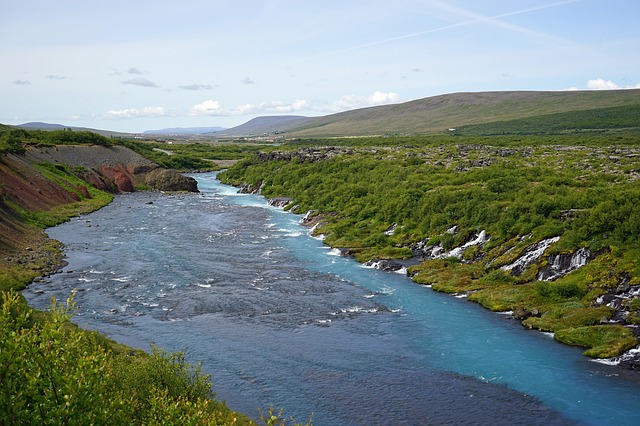
Hraunfossar Falls is fed by a spring that flows from a lava plateau called Hallmundarhraun.
The water from the Langjökull Glacier seeps into the Hallmundarhraun formation and emerges as groundwater through crevices, forming the Hraunfossar Falls. The water that flows out of Hallmundarhraun eventually joins the Hvítá River.
Designated as a natural monument together with Barnafoss
There is another waterfall in the same area as Hraunfossar called Barnafoss. In 1987, Hraunfossar, Barnafossar, and the surrounding area were designated as natural monuments of Iceland. Therefore, when visiting Hraunfossar, it is highly recommended to also enjoy Barnafoss waterfall.Barnafoss is within walking distance and requires little effort to reach.
The water flow at Barnafossar is considerably more powerful than Hraunfossar and flows wildly along the intervening lava walls. Barnafoss has a bridge across the falls, and visitors can cross to view the falls from the other side of the river.
While Hraunfossar is known as “Lava Falls,” Barnafoss is called “Children’s Falls.” The name comes from a local legend about Barnafoss. According to the story, a peasant couple and their two children once lived in the area. One day, while the couple was out of sight, the two children accidentally fell from the stone bridge over Barnafoss. It is said that the children’s mother, out of anger and grief at the loss of her children, destroyed the stone bridge. This Icelandic legend gave rise to the name “Children’s Falls” as it is known today.
Conclusion
Hraunfossar is a unique waterfall in Iceland formed by underground water that flows out of a crevice in a lava rock wall.
The water seeps into a lava plateau called Hallmundarhraun, and then falls as a cascade over a total width of 900 meters into the Hvítá River, which flows below the cliff. Upstream of Hraunfossar is another waterfall called Barnafoss, and both waterfalls have been declared natural monuments.

